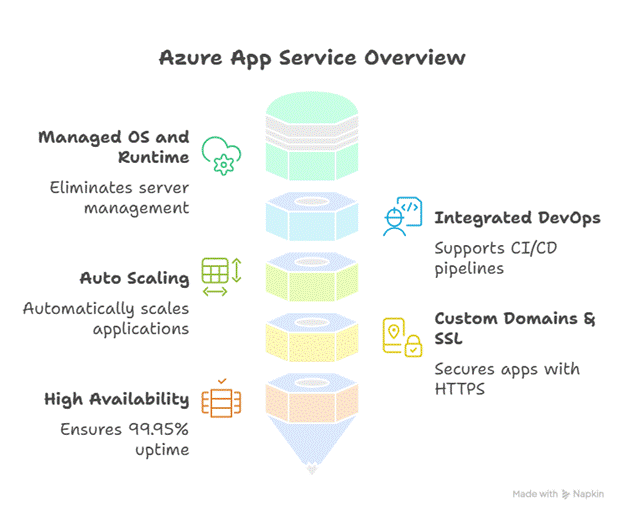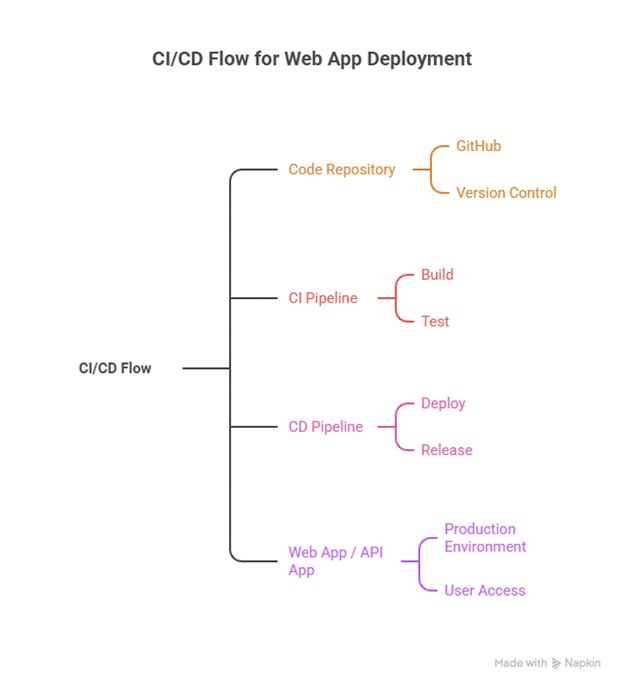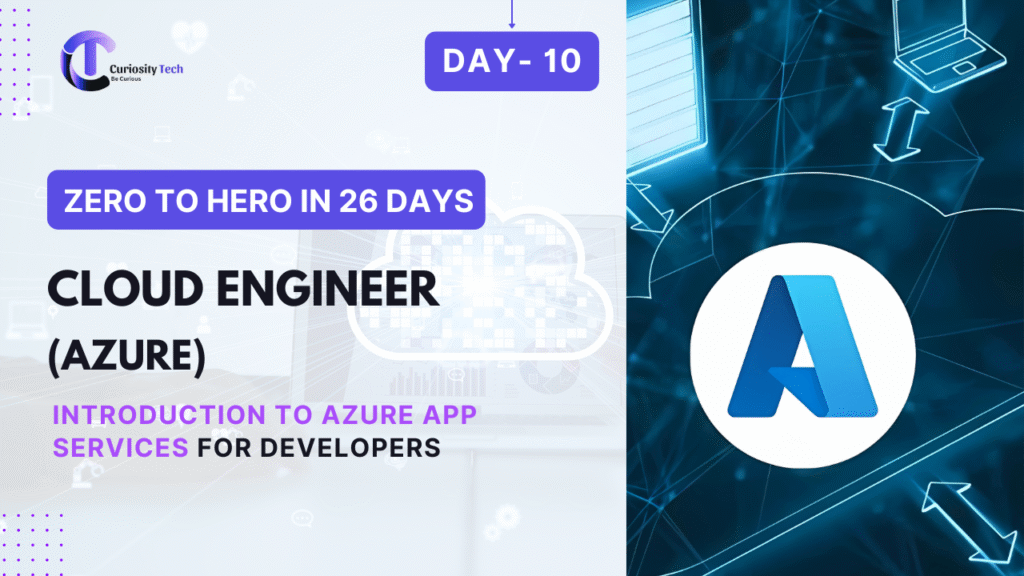Introduction
Azure App Service is a fully managed Platform-as-a-Service (PaaS) that enables developers to build, deploy, and scale web apps, APIs, and mobile backends quickly without worrying about infrastructure. For cloud engineers and developers, mastering App Services is crucial for modern cloud application delivery.
At curiositytech.in, learners combine practical labs with conceptual insights, building enterprise-ready applications while leveraging the full capabilities of Azure App Service.
1. What is Azure App Service?
Definition:
Azure App Service is a managed hosting platform that allows you to deploy web applications, RESTful APIs, and mobile backends with built-in scalability, load balancing, and security.
Key Features:
- Managed OS and runtime: No need to manage servers or OS updates
- Integrated DevOps: Supports CI/CD pipelines with Azure DevOps, GitHub Actions, or Bitbucket
- Auto Scaling: Scale applications automatically based on traffic
- Custom Domains & SSL: Secure your apps with HTTPS
- High Availability: SLA of 99.95% uptime
Diagram: Azure App Service Architecture

2. Types of Azure App Services
| App Service Type | Purpose | Ideal Use Case |
| Web Apps | Host websites and web applications | E-commerce sites, company portals |
| API Apps | Host RESTful APIs | Microservices backend for mobile or web apps |
| Mobile Apps | Backend services for mobile applications | Push notifications, authentication, storage |
| Function Apps | Serverless workloads (trigger-based) | Event-driven applications |
3. Deployment Models and CI/CD Integration
Deployment Options:
- FTP / Local Git: Basic deployment for small projects
- Azure DevOps Pipelines: Automate build and release
- GitHub Actions: Continuous deployment directly from repository
Scenario-Based Example:
A startup wants to deploy a web application and REST API:
- Developer commits code to GitHub
- GitHub Action builds the app and runs tests
- Code automatically deploys to Azure App Service Web App
- API backend deployed to API App Service, integrated with Azure SQL Database
Diagram: CI/CD Flow

4. Hands-On: Creating an Azure Web App
Step 1: Create Resource
- Navigate to Azure Portal → Create Resource → App Service
- Select subscription and resource group (e.g., RG-WebApp-Dev)
Step 2: Configure Basics
- Name: WebAppCuriosity
- Runtime Stack: .NET, Node.js, Python, or Java
- Region: East US
- OS: Windows or Linux
Step 3: Deployment Settings
- Deployment Center → Choose GitHub as source
- Select branch for continuous deployment
Step 4: Scale & Performance
- Configure scaling plan: Manual or Auto Scale
- Assign instance size: B1/B2 (small dev) or S1/S2 (production)
Step 5: Verify Deployment
- Access app via URL (e.g., https://webappcuriosity.azurewebsites.net)
- Check logs and application insights for monitoring
5. Advanced Features
- Custom Domains & SSL Certificates: Secure apps with HTTPS
- Integrated Monitoring: Use Azure Monitor and Application Insights
- Staging Slots: Test new versions without affecting production
- Authentication / Authorization: Integrate AAD, social logins, or OAuth2
- Networking Integration: Connect apps to VNets, subnets, and private endpoints
Scenario:
A financial services app uses staging slots to test a new version of their payment API. Once validated, traffic is swapped seamlessly to production, minimizing downtime and risk.
6. Best Practices for Developers
- Use Resource Groups to organize all App Service resources
- Enable Application Insights for telemetry and error tracking
- Implement CI/CD pipelines for faster deployments
- Leverage deployment slots for zero-downtime updates
- Apply security measures: HTTPS, authentication, and IP restrictions
At curiositytech.in, learners practice deploying multi-tier apps with App Services integrated with SQL Database, Blob Storage, and APIs for real-world exposure.
Conclusion
Azure App Service empowers developers and cloud engineers to deliver secure, scalable, and fully managed applications without managing infrastructure. By mastering App Service types, CI/CD integration, and advanced features, engineers can streamline cloud application deployment. Hands-on labs at curiositytech.in help learners transition from theory to enterprise-grade application deployment, building confidence and expertise.



